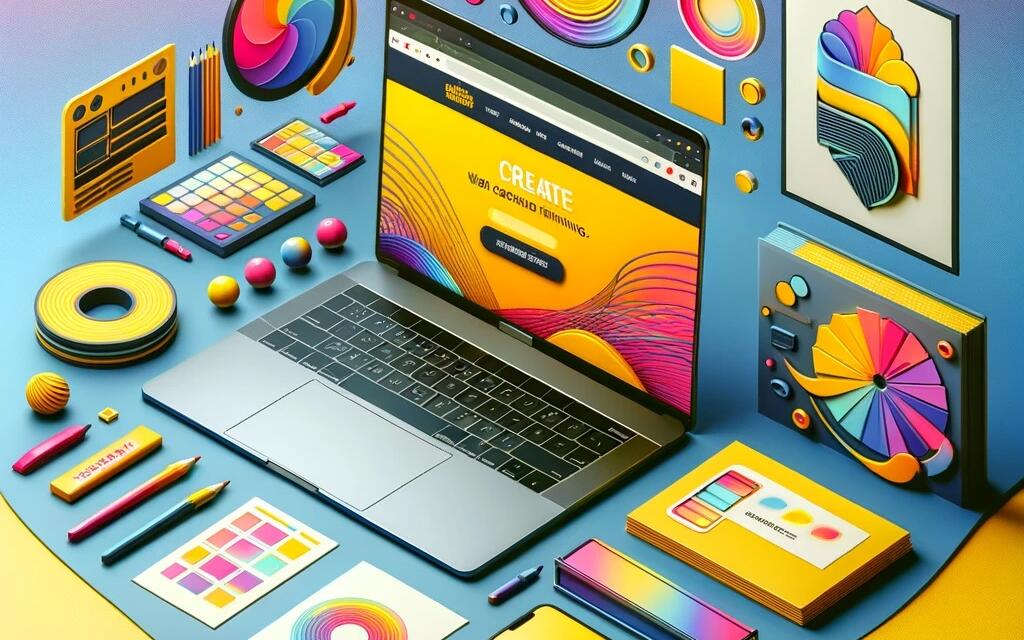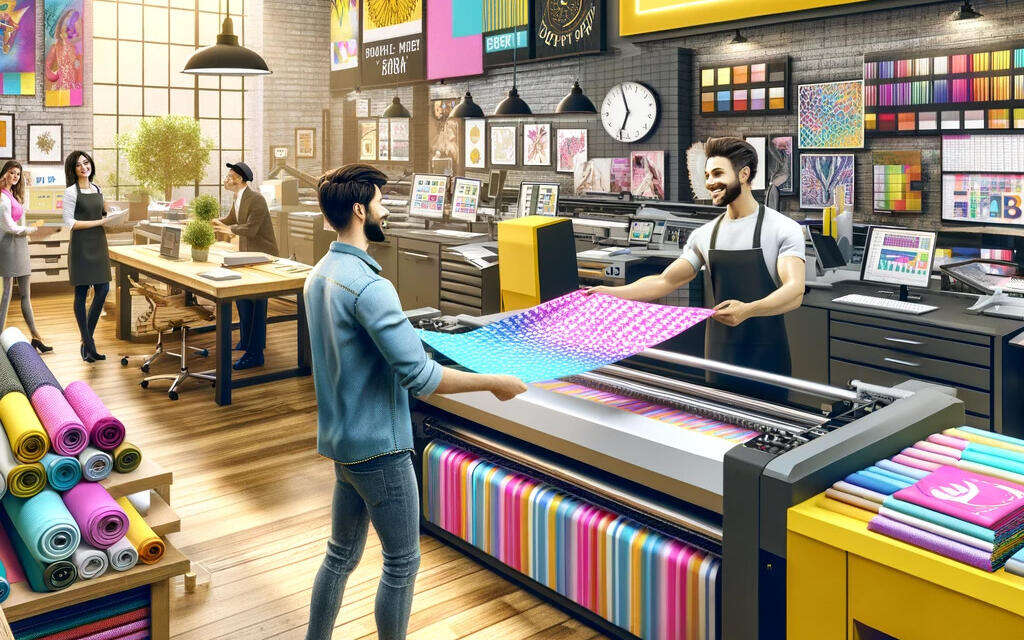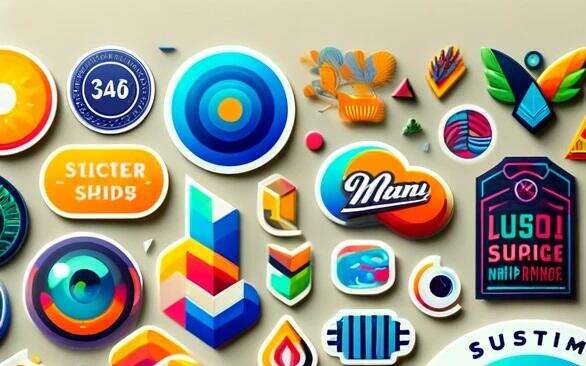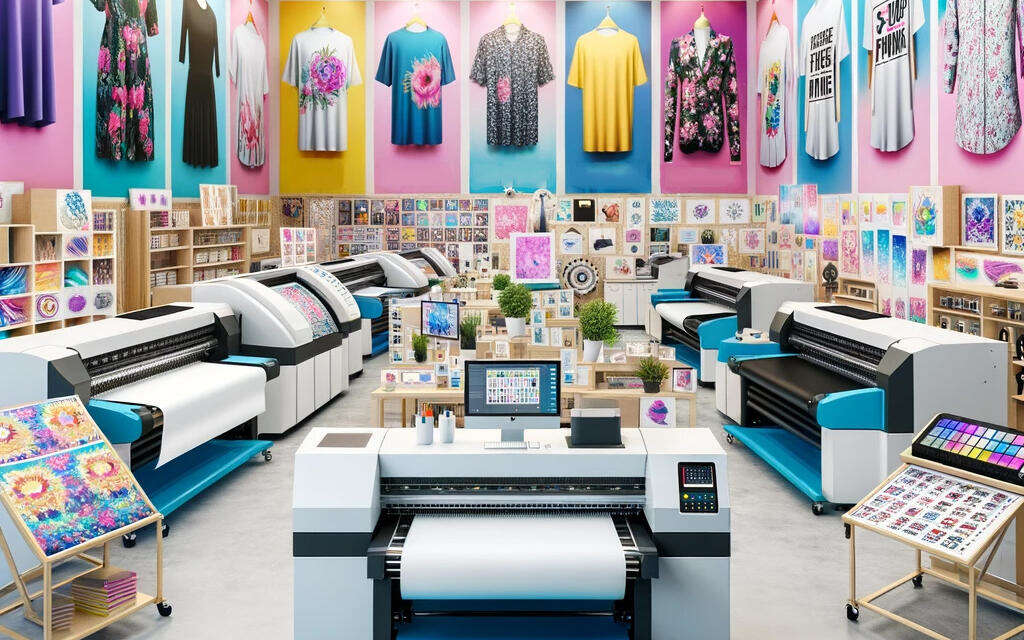Bridging the Digital Divide - A Cohesive Branding Blueprint
Have you ever pondered why the aroma of freshly printed brochures and the sleek design of a website can evoke the same brand essence? It's no coincidence; it's the art of branding consistency.
In an era where our lives straddle the boundaries of digital and physical worlds, a brand's identity cannot afford to live in silos. The fusion of web design and physical branding isn't just about aesthetics; it's about creating a seamless narrative. They are the twin pillars upon which your brand’s temple is built, each reflecting and supporting the other in equal measure.
This post delves into the alchemy of blending the digital with the tangible — a synergy that, when done right, amplifies your brand's message to resonate profoundly with your audience. We'll navigate through the strategies that marry the allure of pixels and print, ensuring that your brand not only occupies space but commands presence, online and off.
The Imperative of Brand Consistency
Brand consistency is the practice of delivering messages in line with the core brand values, utilising similar branding elements across all marketing channels. It is the heartbeat of trust-building, fostering a sense of familiarity and reliability that customers crave. When a brand's ethos, aesthetics, and quality are echoed in every interaction, customers develop an intrinsic understanding of what the brand stands for.
The Psychological Impact:
Consistency in branding is pivotal as it taps into the psychological principle of repetition. Each consistent element – be it a logo, a tagline, or a colour scheme – acts as a cognitive cue that strengthens brand recall. According to a study by Lucidpress, a consistent brand presentation across all platforms has seen to increase revenue by up to 33%. This is the power of familiarity breeding contentment in the customer's mind.
Real-World Brand Integration:
Consider the iconic British brand, Burberry. Known for its distinctive check pattern, Burberry's brand revitalisation in the early 2000s harmonised their online imagery and physical presence. This pivot not only reclaimed their high-fashion status but also resulted in a significant upsurge in sales. Similarly, the John Lewis Partnership's commitment to customer service excellence and 'Never Knowingly Undersold' price promise is reflected both in-store and on their website, providing a seamless customer journey.
Quantifiable Success:
Statistics further underscore the significance of brand consistency. Research indicates that consistent brands are 3.5 times more visible to customers than those with an inconsistent brand presentation. Moreover, a survey conducted by the Content Marketing Institute found that 89% of B2B marketers believe brand consistency is key to brand recognition amidst the noise of digital marketing.
In essence, brand consistency is not just an aesthetic choice but a strategic business imperative. It is the thread that weaves through the fabric of all brand communications, creating a tapestry that narrates a brand's story with coherence and impact.
Web Design - Your Digital Storefront
In the digital domain, your website is the virtual façade of your business, the digital storefront that is often the first point of contact with your brand. Just as a physical shopfront is meticulously designed to invite customers in, your website's design must be equally compelling and reflective of your brand's identity.
Elements of Identity:
The visual elements of your website - colour schemes, typography, and layout - are not merely decorative. They are communicative tools conveying your brand's personality. The colour palette you choose speaks volumes; for instance, blue can evoke trust and dependability, while yellow often imparts a sense of optimism and clarity. Typography, too, is a silent ambassador of your brand. Elegant serif fonts may convey tradition and reliability, whereas sans-serif fonts are seen as modern and approachable.
The layout of your website is the architectural blueprint of your online presence. A clean, intuitive structure that guides visitors through your website with ease is indicative of a brand that values customer experience and accessibility.
User Experience as a Brand Mirror:
The user experience (UX) of your website is where your brand values come to life. It's in the seamless navigation, the responsiveness of design, and the intuitive user interface that your commitment to customer satisfaction is reflected. A positive UX not only ensures that visitors stay longer on your website but also reinforces the perceived value of your brand. According to a study by Forrester, a well-designed user interface could raise your website’s conversion rate by up to 200%, underscoring the vital role of UX in digital branding.
Synchronising Web Design and Brand Strategy:
To align your web design with your brand strategy, start with a clear understanding of your brand promise and values. Every element on your website should be a reflection of these principles. Ensure that your online presence complements your offline materials, offering a cohesive brand story. Regular audits of your website for both content and design consistency are essential to maintain this alignment. Remember, your website is not static; it should evolve as your brand grows.
By integrating these facets of web design with your overarching brand strategy, your website will not only attract but also retain a loyal audience, turning first-time visitors into longstanding customers.
Physical Branding - The Tangible Experience
Physical branding materials are the tangible touchpoints that allow consumers to engage with your brand in the real world. They are the emissaries that carry your brand's message into the hands of your customers, creating a sensory experience that digital cannot replicate.
The Art of Tangible Impact:
Business cards, brochures, and packaging are not mere informational assets; they are crafted experiences. The quality of the paper, the vibrancy of the inks, and the precision of the typography – all these elements coalesce to leave a lasting impression. In an era of digital saturation, the tactile quality of a well-designed business card or the visual appeal of a bespoke brochure can distinguish your brand as one that values quality and attention to detail.
Innovations in Physical Branding:
Take, for instance, the revolutionary approach of MOO, an online print and design company. MOO's NFC-enabled business cards showcase innovation by integrating digital technology with the traditional paper card, allowing for the seamless exchange of digital information through a physical medium. Another example is Lush Cosmetics, which uses eco-friendly packaging to reinforce its commitment to environmental sustainability. Their innovative 'naked' product range, void of packaging, speaks volumes about their brand ethos without saying a word.
Bridging the Digital-Physical Divide:
Ensuring your print materials reflect your digital presence is key to a harmonised brand experience. This means your colour palettes, design motifs, and messaging must be consistent across all mediums. QR codes can be a bridge between the physical and digital realms, allowing customers to be transported from a print ad to a webpage in seconds. Furthermore, the tone of voice and imagery used in print materials should be in sync with what is found on your digital platforms. Consistency is king, and in a world where consumers move fluidly between online and offline, it's essential that your brand does too.
Creating a coherent journey from screen to hand-held materials requires meticulous planning and a deep understanding of your brand's narrative. It's about crafting stories that can be held, stories that resonate with the audience long after they've disengaged from the screen.
Merging Worlds - Strategies for Synergy
In the dynamic interplay of pixels and print, aligning your web design with physical branding is not just beneficial; it's imperative for a cohesive brand narrative. Here we explore the strategies to ensure that your brand resonates with coherence and harmony across all mediums.
Crafting Visual and Verbal Alignment:
Visual coherence is the bedrock of brand recognition. It’s about creating a uniform visual language that can be translated from the glow of a screen to the texture of printed media. This encompasses the replication of colour schemes, typography, and imagery styles across your website, your business cards, and your product packaging. The goal is to evoke the same emotions and brand perception, whether a customer is scrolling through your website or holding your brochure.
Messaging alignment goes hand-in-hand with visual consistency. It's the congruent voice, tone, and narrative that permeate through your taglines, product descriptions, and promotional materials. Whether it’s the playful, conversational tone of Innocent Drinks or the empowering, motivational voice of Nike, the messaging should be unmistakable and unvarying, whether read on a billboard or a homepage banner.
Technological Bridges:
Technology serves as the connective tissue between the digital and physical realms of your brand. QR codes are a prime example, seamlessly guiding your audience from a printed flyer to a landing page, enriching the user experience with multimedia content that print alone cannot provide. Augmented Reality (AR) is another frontier, where a user can scan a product label with their smartphone and be immersed in an interactive digital experience, blurring the lines between the two worlds.
The use of such technologies not only provides a novel experience but also enhances customer engagement and data collection opportunities. They can lead to richer customer profiles and personalized marketing strategies that are informed by the customer's journey across your brand's touchpoints.
The Path Forward:
The future of brand synergy lies in the intelligent fusion of web design and physical branding. It's about harnessing the strengths of each medium to create a brand ecosystem that is immersive, consistent, and engaging. As we advance, the brands that will thrive are those that can navigate the nuances of both worlds, creating a symphony of experiences that resonate with the consumer in a deeply connected way.
Challenges and Solutions in Achieving Branding Synergy
Achieving a seamless blend of web design and physical branding is no small feat. It requires a meticulous strategy and an eye for detail. In this segment, we identify common challenges and provide practical solutions, incorporating insights from industry leaders.
Identifying the Challenges:
A prevalent obstacle is the disconnection between the digital team and the print design team. Each may operate in a silo, leading to inconsistencies in brand portrayal. Moreover, rapidly evolving digital trends can outpace the production of physical materials, resulting in a mismatch between the latest online look and outdated print elements.
Another challenge lies in budget constraints. High-quality physical branding materials come at a cost, and for many businesses, this can lead to compromises that affect the overall brand experience.
Bridging the Divide:
Creating a cohesive team that oversees both digital and physical branding is paramount. Encourage regular collaboration and communication between the teams to ensure that both mediums advance in tandem. Digital asset management systems can be central to this strategy, ensuring that all team members have access to the latest brand guidelines, logos, and templates.
Leveraging Expert Insights: We’ve sought the wisdom of industry leaders who stress the importance of brand audits. Regular reviews of all brand materials can identify inconsistencies and areas for improvement. As Emma Walsh, CEO of BrandBridge Solutions, puts it, "An annual brand audit is as essential as an annual health check. It keeps your brand fit, relevant, and engaged with its audience."
Actionable Advice:
To navigate these challenges, consider this step-by-step guide:
-
Brand Consistency Review: Conduct a comprehensive audit of your digital and physical branding materials. Align them with your current brand guidelines.
-
Budget Allocation: Prioritise where to allocate your budget by identifying key customer touchpoints. Invest in high-impact physical branding materials that complement your online presence.
-
Cross-Training: Implement cross-training sessions for your digital and print teams. Familiarity with each other’s work fosters a unified approach to branding.
-
Technology Utilisation: Invest in technology that bridges the digital and physical divide, such as QR codes or AR, to create a cohesive experience.
-
Feedback Loops: Establish a system for gathering customer feedback on both digital and physical brand experiences, and iterate based on the insights gathered.
By anticipating these common pitfalls and integrating the shared expertise of branding specialists, your business can strive towards a harmonious brand presence that captivates and retains your audience.
Harmonising Your Brand's Digital and Physical Presence
In the grand tapestry of brand building, the harmony between your digital presence and physical branding is not just desirable—it's essential. It's the golden thread that weaves through the fabric of a cohesive brand identity, one that resonates with customers and stands the test of time.
As we navigate this digital era, where first impressions are often formed online, it's imperative for businesses to reflect the same brand ethos in the physical world. This dual presence, when aligned, amplifies your brand's message and fortifies customer trust.
Audit your current branding efforts with a critical eye; it's a necessary step towards uncovering gaps and opportunities. Are your website's aesthetics in sync with your physical marketing materials? Does your online voice echo through your print communications? These are the questions that will guide your path to a synchronised brand identity.
We invite you to take action. Reflect on your brand's current standing, and don't hesitate to reach out for a bespoke branding consultation. Whether it’s refining your digital interface or crafting impactful print materials, Time for Designs is poised to bring your vision to life.
Share your branding journey with us. Have you faced challenges in aligning your digital and physical presence? What strategies have you employed to overcome them? Your experiences can enlighten others and contribute to a community of collaborative growth.
Join the conversation, and let's craft a brand narrative that's not just heard but felt across every medium.








Comments (0)
Add a Comment